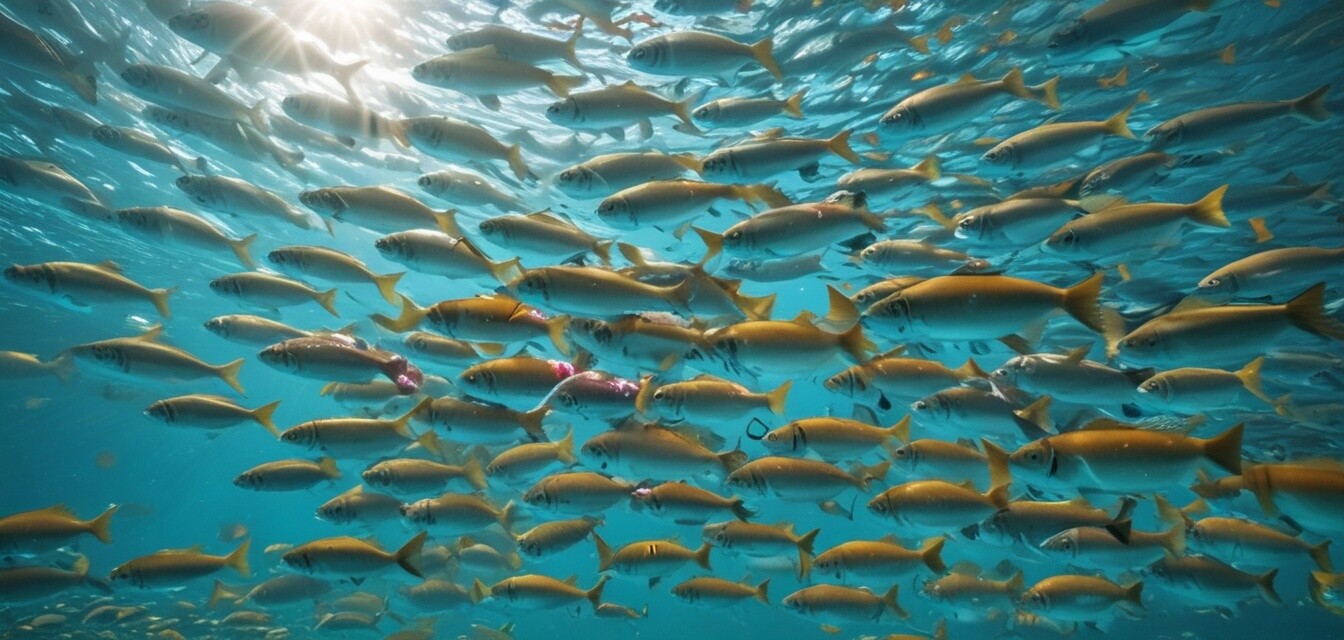
Capturing schooling fish in underwater photography
Key Takeaways
- Pay attention to timing and light conditions for the best shots.
- Utilize proper composition techniques to enhance visual appeal.
- Experiment with various shooting modes and settings on your underwater camera.
- Practice patience and observe fish behavior to predict movements.
- Consider using artificial lighting to illuminate the scene effectively.
Underwater photography is a beautiful art form that allows us to capture the wonders of marine life, particularly the mesmerizing schools of fish. However, photographing schooling fish is not without challenges. Understanding techniques pertaining to timing and composition can significantly enhance your underwater photography skills.
Understanding the behavior of schooling fish
Before attempting to capture schooling fish, it's essential to familiarize yourself with their behavior. Fish tend to move in unison, which creates stunning visual displays but can also be unpredictable. Here are some factors to consider:
- Fish species: Different species have varying swimming patterns. Some may dart quickly, while others swim slowly.
- Water conditions: Underwater visibility, current, and light conditions will affect how fish behave.
- Time of day: Fish are often more active at dawn and dusk, which can offer the best photographic opportunities.
Timing your shots
Timing is crucial in capturing the natural beauty of schooling fish. Here’s how you can ensure you're at the right place at the right time:
- Observe: Spend some time watching the fish before shooting. This will help you anticipate their movements.
- Use burst mode: Set your camera to burst mode to capture multiple frames quickly.
- Follow the light: Underwater light constantly changes, especially in shallow areas. Be prepared to adjust settings accordingly.
Composition techniques for stunning underwater photography
Good composition can transform an average shot into a breathtaking one. Here are some essential composition techniques to implement:
- Rule of thirds: Position your subjects along the lines of a grid to create balance.
- Leading lines: Use natural lines—coral reefs or ocean currents—to guide the viewer’s eye.
- Fill the frame: Instead of capturing the entire school, focus on a group within the school to create an intimate composition.
Utilizing color and light
Color and lighting play significant roles in underwater photography. Here’s how to leverage them effectively:
| Technique | Description |
|---|---|
| Natural light | Utilize sunlight during shallow dives to illuminate your subjects. |
| Artificial lighting | Use underwater flashes to brighten scenes in darker waters. |
| Color correction | Adjust your camera’s white balance to compensate for underwater color loss. |
Common challenges and how to overcome them
While photographing schooling fish, you may encounter several challenges. Here are some tips to overcome them:
- Murky water: Avoid stirring up sediment. Fine-tune your settings to increase ISO for better exposure.
- Fish scattering: Approach slowly and avoid sudden movements that may scare them away.
- Equipment issues: Ensure your camera and housing are in optimum condition before your dive.
Experimenting with settings and techniques
Don't be afraid to experiment with different camera settings and techniques. Here are some suggestions:
- Adjust exposure settings to avoid washed-out images.
- Try different focal lengths to emphasize different aspects of the school.
- Play around with angles; sometimes a shot from below can create a more dramatic effect.
For more tips and insights, check out our Tips and Techniques section to continually enhance your skills.
Conclusion
Capturing schooling fish in underwater photography is a captivating endeavor that requires patience, understanding, and technique. By mastering the principles of behavior, timing, composition, and utilizing proper lighting, you can create stunning visual stories of these magnificent creatures in their aquatic world. Always strive to improve and learn with each dive, and you’ll see your underwater photography skills flourish.
Pros
- Creates stunning visual displays of marine life.
- Enhances awareness of fish behavior.
- Improves composition and technical photography skills.
Cons
- Can be challenging due to unpredictable movements of fish.
- Requires specialized equipment and clear water conditions.
- Long preparation time and patience needed for the perfect shot.

